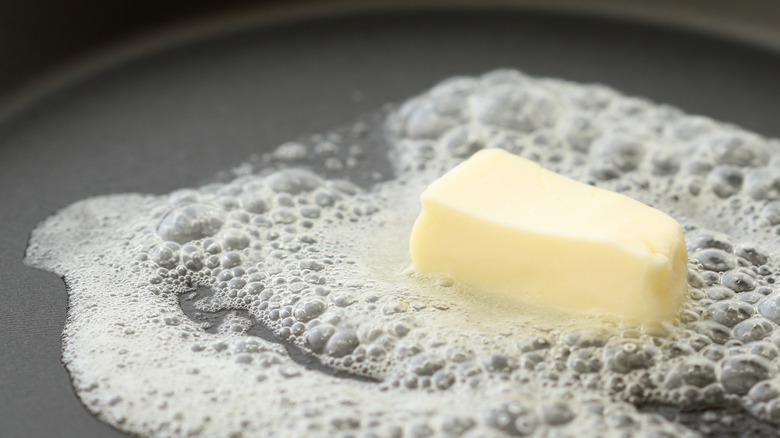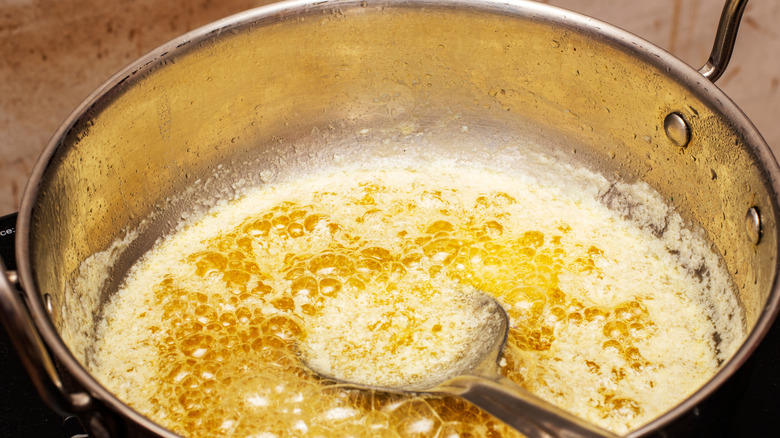Mixing Oil And Butter: Does It Really Change The Smoke Point?
It's common advice in the culinary world: adding oil to butter will raise it's smoke point. Pro chefs tout the technique on TV and grandmas pass the tip to grandkids, but does it actually work? Inarguably, definitively: no.
Butter is made of fat, water, and milk proteins. When butter melts, the water evaporates which leaves only the proteins and fat. Those proteins burn easily, so butter will smoke at around 350 degrees Fahrenheit. The problem? We want to use butter on everything, including dishes that require high heat.
Butter adds a richness and complexity that you don't get from most other fats. You can still use butter for some things, like French toast, but it's not great for high-heat applications. For butter lovers (like me — my first sentence was "I love butter" and I stand by that) that's a problem.
Adding oil doesn't remove the proteins or raise their smoke point, though. They're still there — and they'll still start to smoke if they get too hot. So why do so many people believe the myth? Well, the oil dilutes the burnt butter taste. But your butter will still be burnt — which kind of defeats the point of using it at all.
How to actually raise butter's smoke point
There's good news for us butter lovers, though — you can raise butter's smoke point, it just takes more work. Remove the milk proteins, and you're left with pure butterfat (aka clarified butter or ghee). Removing the proteins brings the smoke point up to around 450 degrees Fahrenheit, the same temperature as common cooking oils like canola. And, while it's not as simple as adding butter and oil to a pan, clarified butter is easy to make at home.
If you want to make clarified butter, opt for European-style butter. European butter has a higher fat content, and it's usually cultured, too. No, not just because it's European — cultured butter is lightly fermented, like yogurt, and has a stronger flavor. Most of the butter flavor comes from those milk proteins, so removing them makes for a less flavorful fat. The extra flavor of European butter will keep your clarified butter from tasting bland.
You'll want to use a decent amount of butter when clarifying since it'll make it easier to remove the milk proteins. Heat the butter over low heat in a saucepan until you start to see white foam on top. Once it's fully melted, take it off the burner and let it cool for a few minutes. Skim the foam off (that's the protein) and pour out the fat underneath. There may be bits of protein left on the bottom, too, so you can use a coffee filter or cheesecloth if you want to be extra thorough.

